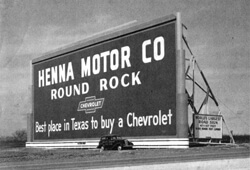The Historic Round Rock Collection
Chronological History
The Historic Round Rock Collection is a project documenting Round Rock’s history, funded in part with a grant from the Texas Historical Commission. These pages are adapted from the original 1991 print version; later additions have been made by staff. Recent Round Rock news is given in the News feature.
8000 BCE
Prehistoric peoples probably began arriving in the Williamson County area where they settled along the streams and rivers (Scarbrough 21).
Prehistoric peoples probably began arriving in the Williamson County area where they settled along the streams and rivers (Scarbrough 21).
1527 CE
A.D. Alvar Nunez Cabeza de Vaca, Estevanico and Alonso del Castillo Maldonado and Andres Dorantes were shipwrecked on the Texas Coast. They spent eight years travelling with various groups of Indians. They may have reached Williamson County and probably present-day Round Rock (Ibid. 52). Estevanico was a black Conquistador who explored New Mexico and Arizona for Spain (Dennis 12).
1680s
Captain Alonso de Leon followed El Camino Real from San Antonio to Bastrop several times around this period. At least once he used the alternate route, El Camino de Arriba, which crossed Brushy Creek and the San Gabriel River. Travel to the Spanish missions in Milam County was already fairly common as two “roads” through the wilderness were well-known (Scarbrough 53).
1691
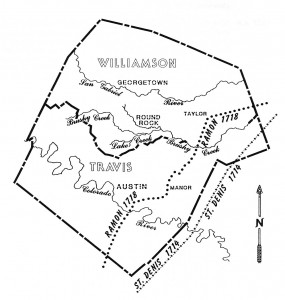
Domingo Teran de los Rios, the first Spanish governor of the Provincia de Tejas, passed through southeastern Williamson County bringing cattle and supplies to the missions in east Texas (Ibid. 54).
1716
Jucheran Saint Denis, of France, and Captain Domingo Ramon, of Spain, led an expedition that camped on Brushy Creek. A member of their party, Fray Isidro Felix Espinoza named it the Arroyo de las Benitas Animas (Creek of the Blessed Souls) (Ibid.).
1721
Marques de Aguayo led 500 soldiers, a mounted infantry battalion, 600 wagon loads of supplies, 4000 horses, 600 head of cattle, 900 sheep and 800 mules to replenish the missions and to reestablish the Spanish hold on Texas (Ibid. 55). On Tuesday, May 27, 1721, Father Jose Antonio de la Pena, a member of the expedition, wrote in his diary:
“We proceed toward the northeast, to any arroyo which they call Las Animas…The whole country is of low hills without thickets or trees, as far as the said arroyo, which is heavily timbered on both sides. A quarter of a league1 beyond, another small arroyo is passed.2 It is likewise wooded, and appears to rise nearby. From there the route descends northeast, to the Rio de San Xavier” (Quoted in Scarbrough 56).3
During this time, the Tonkawas and Lipan Apaches lived in the area. The Tonkawas were generally friendly, while the Apaches were often hostile toward the invading Spaniards. About the second quarter of the 18th century, the Apache tribes became more friendly and allied themselves with the Spanish against the Comanches who had migrated south into Texas and were regularly attacking the Lipan Apaches (Ibid. 33-41). Refer to the Tonkawa Indians page for additional information.
1749
The Spanish establish the second of three missions in Central Texas: San Ildefonso, near the junction of Brushy Creek and the San Gabriel River.
1753
After drought and illness made the Spanish missions on the San Gabriel River uninhabitable, Spanish influence in the area declined (Ibid. 63-64).
1820
Moses Austin received permission from the Mexican government to found a colony in Texas. He died shortly thereafter and passed the control of the colony to his son, Stephen.
1821
Mexico declared its independence from Spain and the Mexican flag becomes the third to fly over Texas (after the Spanish and French).
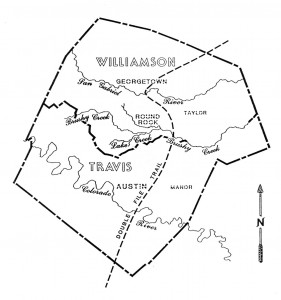
1828-1829
The Delaware Indians marked the Double File Trail after being pushed out of east Texas by white settlers. The tribe rode in two lines, side by side, thus giving name to the trail. This road was used for many years by settlers, troops and Native Americans (Ibid. 73).
1830
The Mexican government rescinded its 1825 law encouraging emigration, an early sign of the coming revolution.
1836
On March 2, Texas declared its independence from Mexico. Shortly after the creation of the Texas Rangers, a company led by Captain John J. Tumlinson built a fort on Brushy Creek, south of Leander. The settlement and Indian look-out, known variously as Block House Fort of Spring Fort or Tumlinson Fort, was one of several short-lived settlements on Brushy Creek. During the 1830s, there were a few white settlers and they were often attacked by the Native Americans in the area. Captain Tumlinson abandoned the fort a few months after it was built and moved to Bastrop, evacuating families from the frontier in the face of General Santa Ana’s invasion (DiGesualdo and Thompson 6; Scarbrough 77-79).
On April 21, Texas troops defeated General Santa Ana in the Battle of San Jacinto, winning independence for the Republic of Texas. At least five veterans from that battle settled in the Round Rock area before 1850. They were Washington Anderson, Major John Chenneyworth, Dr. Thomas Kenney, Major Robert McNutt, Matthew Moss and Elisha Prewitt (DiGesualdo and Thompson 43-45; Scarbrough 80-83).
1838
Dr. Thomas Kenney and his family moved from Bastrop and built a small fort on Brushy Creek. Several other people also took up residence at the fort, including Mr. And Mrs. Joseph Weeks, Major John Chenneyworth, Jim Rice, Henry Cattleberry, Jack Angel and several others (DiGesualdo and Thompson 10-11; Scarbrough 83).
In 1904, W. K. Makemson, first president of the Williamson County Old Settlers Association, wrote:
“Kenney’s [sic] Fort was only a short distance from the junction of a spring branch with Brushy Creek at the Double File Trail Crossing. It consisted of four log cabins with port holes on the exposed sides, and was enclosed with a picket stockade of logs about eight feet high with wide strong gates on the East and West. It fronted North on the bluff on Brushy Creek, and the East side was near the spring branch.” (“Some Early” 79).
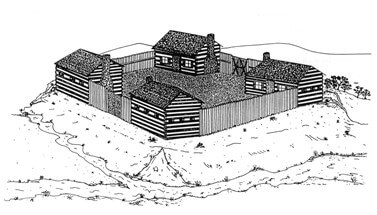
The Republic of Texas grants Wiley Harris one-third league of land (1,500 acres) in Western Milam County. The Site would become “New” Round Rock in 1876.
1839-1841
Various settlers began arriving:
“Soon after the Kenny [sic] Fort was built, Davis Chandler made settlement on the north side of Brushy Creek at the place afterwards called Wadkins Crossing, and Capt. Ladd settled near the junction of Brushy and Chandlers Branch, and soon after that Capt. Merrill [sic] settled one half mile above Barnhart on the same side of the branch. Chandler subsequently sold his improvements to Sam Wadkins and improved a place farther up the branch, which is now known as the old Thos Thaxon place. In 1841, Dr. Miller settled on the south side of Brushy Creek, about three quarters of a mile below Wadkins crossing, which he abandoned two or three years afterwards.” (“Some Early” 80).
1841
On June 20, a group of some 300 men (mostly merchants), dozens of wagons, oxen and a small herd of cattle were assembled near Kenney Fort to take part in an expedition to Santa Fe, New Mexico (then part of Mexico). Officially, the mission was planned to increase trade between Texas and Mexico although the true goal was to acquire the region for Texas (Falconer 76).
Thomas Falconer, a British citizen who accompanied the expedition, wrote later that he was not informed that its object was “to assert a jurisdiction over a part of New Mexico…It was represented to be a purely mercantile enterprise, of which assurances of a friendly reception had been received…” (Ibid.).
Before the group left, President Lamar made a speech and then saw them off the morning of Sunday, June 20. They followed the Double File Trail north and camped the first night along the San Gabriel River. They reached Santa Fe in September after a journey of over 1000 miles. The party succumbed to bickering and infighting and separated into smaller groups which were arrested as they arrived in New Mexico. The expedition’s expected “friendly reception” was a forced march to Mexico City some 2000 miles away. The men that survived were released in 1842. Refer to the Santa Fe Expedition page for more information.
1842
When Sam Houston assumed the Presidency late in 1841, the Texas Republic’s capital was in Austin, where it had been moved in 1839. He attempted to switch the capital back to Houston, citing the threat of Indians and the invasion by Mexico. In September, General Adrian Woll of the Mexican Army invaded Texas and occupied San Antonio for a few days and then retreated.
Sam Houston then advised all settlers to move east of the Brazos River as their safety from attack by Mexican troops and Indian parties could not be guaranteed. All the settlements along the Brushy except Kenney Fort were abandoned (“Some Early” 80). President Houston argued that the Mexican invasion proved that Austin was unsafe and refused to live there. Later that year, he called the legislature into session in Washington-on-the-Brazos. However, all the records and official documents of the Texas Republic remained in Austin. On December 10, President Houston ordered the land office records transferred to Washington-on-the-Brazos. On New Year’s Eve, Major Thomas Smith and Captain Eli Chandler loaded the documents on wagons and headed north, camping inside Kenney Fort. The next day, Austin citizens, armed with a cannon, arrived at the fort and convinced the officers to return the archives to the official capital. The incident, in which no shots were fired, came to be known as the Archives War. Refer to the Archives War page for more information.
1843
Mary and Washington Anderson, a veteran of San Jacinto, moved to an area that came to be known as Anderson’s Spring on Brushy Creek (near the Heritage Center on US-79). They built a log cabin and possibly the first mill in Williamson County. The saw mill washed away around 1845, causing them to move from the area (DiGesualdo and Thompson 87, 96; Scarbrough 105).
1844
Dr. Kenney, John Courtney, Henry Castleberry and several Towakoni Indians were ambushed and killed by Native Americans while retrieving a load of buffalo hides. Captain Nelson Merrell assumed control of the fort. After Kenney’s oldest daughter Mary Jane married John C. Lee, the couple moved back to the fort and lived there from 1848-1852.7 (Thompson and DiGesualdo 14, 131, 135; “Some Early” 78-79).
During this year, several councils were held between Sam Houston’s government and Native American tribes. Tawankoni, Comanches, Wichitas, Wacos, Delawares and Lipan Apaches were reported near Round Rock and Austin (Scarbrough 107).
1846
On February 19, Texas was officially admitted as the 28th state of the Union.
Williamson County, still on the Texas frontier, began to attract more and more settlers. That year Dr. W.I. Anderson, Levi Asher and Reverend Freeman Smalley arrived and built homes along Brushy Creek near Round Rock (Scarbrough110).
Captain Nelson Merrell founded Merrelltown to the south of Round Rock in Travis County (Thompson and DiGesualdo 135).
Stage line from San Antonio to Waco crosses Brushy Creek near the Rock.
1847
Matthew Moss, James Harrell, Dr. D. F. Knight, John and Jane Bratton and Samuel and Martha Makemson were a few of the new arrivals that year.
The first church service was conducted at Freeman Smalley’s house by the Reverend Robert Taliaferro (who married Washington Anderson’s daughter Chloe in 1855). (DiGesualdo and Thompson 367, 90)
1848
Mexico relinquished its claim to Texas with the signing of the Treaty of Guadalupe Hidalgo on February 2.
On March 14, the state legislature approved a petition to form Williamson County out of Milam District. One petition, written by Washington Anderson, suggested San Gabriel County as a possible name. On the other of the two hand-written petitions, Clear Water County was substituted. Both suggestions were ignored and the county was designated Williamson County after Robert Williamson, a Milam County judge and state senator (Scarbrough 113-122).
That summer, a log cabin school, the first in the county, was built along Lake Creek a few miles south of downtown Round Rock. A second school was built by Samuel Makemson and Dr. D.F. Knight to the north of Brushy Creek (Ibid. 113-114).
The Missionary Baptist Church, built north of Old Round Rock, was one of the first, if not the first, church in Round Rock and the county. The congregation disbanded four years later (Ibid. 114).
John Harris built the Stage Coach Inn, a regular stop on the stage lines through the Round Rock area (Carter 176).
On August 7, Jacob Harrell and Dr. W. I. Anderson of the Round Rock area were elected as two of the first four county commissioners (“Some Early” 82).
On October 10, Washington Anderson acted as foreman of the first Williamson County grand jury (Ibid.).
Williamson County, organized six months earlier, participates in its first U.S. presidential election in November of the same year; 41 votes are cast for Democrat Lewis Cass, and 17 votes support Whig Zachary Taylor, hero of the Mexican War and 12th president of the United States.
Nelson Morey and Josiah Taylor operate the first stores in the county on the north side of Brushy Creek.
1850
The population of the area of Williamson County that would become Round Rock is 250 (Census).
1851
On May 27, Brushy Creek Post Office in “old” Round Rock was opened. Thomas Oatts served as first postmaster (DiGesualdo and Thompson 225).
Sam Bass was born in Indiana.
1853
Anna Palm, sister-in-law of Svante Palm, the Swedish vice-council appointed to Texas, settled in Palm Valley with her six sons. Mr. Palm’s business partner, Svante Swenson, purchased the Kenney Fort site and deeded it to his sister in late December. The Palm Valley area of Round Rock is named after Anna Palm (Scarbrough 169).
1854
On March 20, Williamson County was divided into fourteen school districts. James Boyce was selected to take charge of schools in the Round Rock area (Ibid.).
On August 24, Brushy Creek Post Office was changed to Round Rock because another Texas town had already claimed the name (DiGesualdo and Thompson 226).
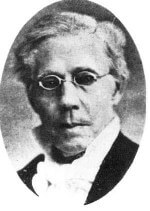
1855
Arvid and Anna Nelson and their children migrated from Sweden to Palm Valley. Many Swedes followed the Nelsons and the Palms. Svante Palm and the Nelsons’ son Andrew assisted many of the new families (Ibid. 208-209).
Most of the surviving Tonkawas settled on the Brazos Reservation.
1856
Round Rock appeared for the first time on Texas Land Office maps (Scarbrough 149).
In February, a slave patrol intended to keep slaves from escaping was established in Round Rock. It functioned intermittently until the end of the Civil War (Scarbrough 183-184).
1858
Round Rock Masonic Lodge No. 227 was established (DiGesualdo and Thompson 355).
1859
The Tonkawa tribe and other reservation Indians were attacked by white settlers in retaliation for Comanche raids. The tribes, under protection of the U. S. Army, began moving to the Indian Territory on July 3 (Webb 225).
1860
The population of Round Rock is 450 (Census).
The Texas Constitutional Union Party, formed earlier in the year, passed a resolution against secession. Sam Houston, after nearly receiving the national Constitutional Union Party nomination for President, campaigned in Texas against secession.
On November 8, Abraham Lincoln was elected President of the United States without appearing on the ballot or receiving a single vote in Texas.
William (Bill) Pickett, inventor of bulldogging, or steer wrestling, and an internationally famous rodeo star was born in Williamson County, between Round Rock and Taylor. He worked at times in Round Rock and surrounding towns. He was kicked in the head by a horse and died in Oklahoma on April 2, 1932. In 1972, he was inducted as the “First Bulldogger, First Negro in the Cowboy Hall of Fame” (“Black Rodeo Cowboy Honored”).
1861
Early in the year, Williamson County delegates voted against leaving the Union at the Secession Convention in Austin. On March 2, Texas declared itself, once again, independent and then applied to be and was accepted as a member of the Confederate States of America.
Andrew John Nelson, son of Arvid and Anna Nelson, built a log cabin church in the Palm Valley Settlement (Scarbrough 169).
In August, Dudley Hiram Snyder, who lived at different times in Palm Valley and just outside Round Rock, joined the Confederate Army, and, under orders, drove cattle from Texas to Tennessee (Taylor 10). In 1864, he married Mary Ann Oatts, daughter of Thomas Oatts, Round Rock’s first postmaster (DiGesualdo and Thompson).
1862
Half of the surviving Tonkawas (about 170) were massacred by Shawnees, Creeks and Delawares on the Wichita reservation in the Indian Territory (Jones 71).
1864
Jesse Chisholm, on a trading mission, marked out a trail in Kansas which gave its name to existing trails stretching from the Rio Grande to the stockyards in Abilene, Kansas (Gard 72). One of the trail’s feeder routes7 that passed near Round Rock that came to be known as the Chisholm Trail was originally called the Shawnee Trail.
1865
On June 19, General Gordon Granger, marking the end of the Civil War in Texas, proclaimed the authority of the United States government and freed all slaves in the state. “Juneteenth” is still celebrated as Emancipation Day in Texas.
1867
Greenwood Masonic Institute, an important early private school was founded.4 The local Masons that sponsored the Institute included Thomas Oatts, G. W. Davis, Livingston M. Mays, T.J. Caldwell and Dudley Hiram.
1869
Dudley H. Snyder went up the Chisholm Trail from near Round Rock. He was probably the first Round Rock resident to make the trip to Abilene, Kansas (Scarbrough 207-208). Refer to the Chisholm Trail page for additional information.
1870
The population of Round Rock is 800 (Census).
Brushy Lutheran Church, later renamed Palm Valley, was founded (Ibid. 170).
The Walsh family founded what would become the Round Rock White Lime Company in Austin. The operation was moved to Round Rock a few years later (DiGesualdo and Thompson 282-283).
Round Rock’s first newspaper, published by Nat Henderson, was founded. The Round Rock Sentinel folded soon after it began, resumed printing a year later and was finally moved to Georgetown (Scarbrough 264).
John Wesley Hardin, a famous outlaw that lived for a while near Round Rock, enrolled in and graduated from Greenwood Masonic Institute on the same day (Ibid. 289).5
Captain Nelson Merrell built his distinctive rock home on what is now Palm Valley Boulevard (National Register of Historic Places).
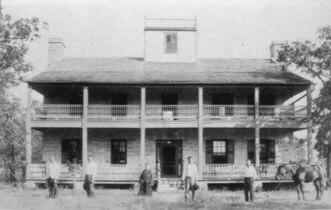
1871
Harriet Cluck of Round Rock was the first white woman to go up to Chisholm Trail. The whole Cluck family, Harriet, her husband George and their three children, made the journey accompanied by D. H. Snyder (Taylor 157-158). Of course, at the same time Native American women and children traveled regularly throughout the region.
1876
The Texas Land Company bought 127.75 acres of the Wiley Harris tract from the International and Great Northern Railroad which it subdivided and sold in lots on July 4, the nation’s Centennial. The land, which became new Round Rock (or downtown) was previously owned by Washington Anderson (DiGesualdo and Thompson 75).
1877
The Masons tried to donate the first two floors of the Greenwood Masonic Institute to Southwestern University for use as the girls’ school, with the third floor reserved for Lodge meetings (“Minutes” September 22 and October 27, 1877). The offer was never accepted.
On September 19, Sam Bass and several others robbed the Union Pacific Railroad at Big Spring, Nebraska of $60,000 in new $20 gold pieces.
John Wesley Hardin was captured in Louisiana by Texas Ranger John Armstrong.
Citizens of Round Rock vote to incorporate their town, but the effort falters a few years later.
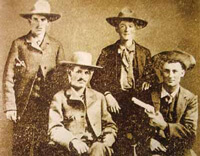
1878
On Friday, July 19, Sam Bass, Seaborn Barnes, Frank Jackson and James Murphy came into Round Rock to scout the robbery that they had planned for the next day. Murphy, having tipped off the Texas Rangers, stopped off in Old Town while the others rode into New Town. A gunfight began unexpectedly; Deputy Sheriff Grimes was killed and Deputy Sheriff Morris Moore was injured. Sam Bass, shot in the hand and in the torso, escaped with the help of Jackson. Seaborn Barnes was killed attempting to mount his horse. The following morning, Sam Bass was found under a tree. He died the next day, his twenty-seventh birthday, Sunday, July 21. Refer to the Sam Bass page for more information.
The Georgetown railroad link to Round Rock was completed (“Founding Georgetown Railroad”).
1879
On June 7, Jim Murphy, the man who betrayed Sam Bass to the Texas Rangers, took poison and died.6
Fire destroys 10 buildings in a block of New Town, causing $20,000 in damage.
1880
The population of Round Rock is 1,250 (Census).
Round Rock’s Masons offered to donate the Greenwood Masonic Institute to the Little River Presbytery of the Cumberland Presbyterian Church. In 1881, the transfer was accepted (“Minutes” November 20, 1880, and January 15, 1881). The school, now called Round Rock College, admitted its first students that fall (DiGesualdo and Thompson 461; Scarbrough 251).
1883
Round Rock College (Greenwood Masonic Academy) burned. A new building,known as the Round Rock Institute, was built only a short distance away, between Old and New Round Rock (Scarbrough 252-253).
Telephone service between Round Rock and Taylor was established (Ibid. 269).
1888
The ownership of Round Rock College was transferred to the state from the Southern Presbyterian Church, which had taken the school over the year before. Henceforth, it was a public school (Ibid. 253).
1889
The Taylor Daily Times society page reports a grand masked ball to be held in Round Rock.
1890
The population of Round Rock is 1,438 (Census).
1891
The Old Round Rock Post Office was eliminated on December 16. From that point on, both the new and old towns were referred to simply as Round Rock (Thompson and DiGesualdo 226).
Round Rock builds its first firehouse.
1894
William Makemson, longtime Williamson County resident and historian, runs for governor on the Republic ticket; he receives 13 percent of the vote (54,000) and comes in third.
1896
S. W. McClure founded the Round Rock Searchlight which became the Round Rock Leader in 1902 under John Hudson (Scarbrough 264).
The well in the intersection of Mays and Main appears on the Sanborn Fire Insurance Maps for the first time.
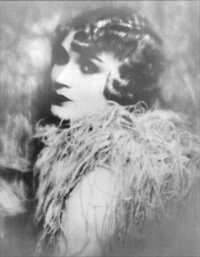
1899
Vander Clyde “Barbette” Broadway, a famous trapeze artist, was born in Trickham, Texas. He moved to Round Rock as a small boy. After graduating from Round Rock High School in 1913, he joined the “Alfaretta Sisters,” a trapeze act, and performed disguised as a woman. Taking his act to Paris, he became an international star. After he developed polio in 1938, he coached and choreographed several circuses and Hollywood movie stunts. Broadway is buried in the Round Rock Cemetery (DiGesualdo and Thompson 102-107).
Record-breaking cold weather hits Texas in February, killing livestock and crops. In Williamson County, a blizzard brings snow and sleet, and for two weeks the temperature remains below freezing.
1900
The population of Round Rock is 1,138 (Census).
1904
A broom produced at the Round Rock Broom Factory (100 E. Main) by Harry William Chambers won a gold medal in the St. Louis Worlds Fair. Also at the Fair, a barrel of Round Rock White Lime Company limestone received a first place award.7 (DiGesualdo and Thompson, 283-284, 303)
1906
Trinity Lutheran College was opened with the help of $7,000, several plots of land and a well donated by John Nelson (Catalogue 5). Four faculty members and 59 students open the first session at the College; Dr. J.A. Stamline is president. Enrollment later that year rises to 96.
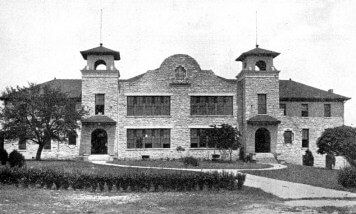
1910
The population of Round Rock is 1,000 (Census).
1910s
During this period, many Mexican families migrated to Round Rock, fleeing the civil war in their native country. Many of them took jobs at the Austin and Round Rock White Lime companies.
O.A. Voigt arrives with equipment to dig deep wells that would be powered by windmills. Before this people got water by bucket from shallow wells, from cisterns (which tasted bad), from the town well (at the intersection of Mays and Main Streets), or delivered by the barrel.
1912
Round Rock citizens again vote to incorporate as a town. Jack Jordan is elected its first Mayor and City Council meetings are held on the first floor of the Woodmen of the World building.
1913
The first City Council met with Jack Jordan serving as Mayor, J.A. Nelson, J.C. Jackson, Dr. W.G. Weber, Ed Walsh and W.A. Gantt as alderman and A.K. Anderson as the City Secretary (Round Rock City Council Minutes January 20, 1913; Book 1, page 1).
The first two street lights were put up in Round Rock (Ibid. December 9, 1913; Book 1, page 25). Three “Speed Limit 12 Miles” signs were ordered placed in town (Ibid. May 13, 1913; Book 1, page 16).
In February, the Round Rock Institute burned to the ground in a pre-dawn fire, also destroying all public school records to that time. In May, citizens voted to incorporate a school district and construct a new 3-story brick building on Anderson Avenue, the site of the current C. D. Fulkes Middle School.
1914
The City assumed control of the Round Rock Cemetery. The Ladies Cemetery Association requested “that the Mexicans be restricted to a certain portion” (Round Rock City Council Minutes December 8, 1914; Book 1, page 42).
1918
Round Rock receives its first (limited) electrical service.
1920
The population of Round Rock has declined to 900 (Census).
1921
Record amounts of rain fell in the county on September 8 and 9.
1923
The road now known as FM 1460 built from Georgetown to Round Rock, crossing Brushy Creek at Georgetown Street. Before this the only north-south route went south on Chisholm Trail through Old Town, along Round Rock Avenue, then south on Mays street.
1925
Thomas Nelson and G. R. Lundelius founded the Cheese Factory which provided income for area farmers for many years (Scarbrough 358).
1926
The Lone Star Bakery opens on East Main Street, and for the first time sliced bread is available in Round Rock.
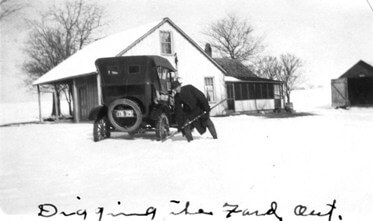
1927
Unusually heavy snow fell on Round Rock and remained on the ground several days.
Baylor bus accident. On January 22nd, a north-bound train struck a school bus filled with Baylor basketball players on their way to play UT. There was a terrible storm that day and visibility was poor as the bus approached the unguarded tracks. No one saw or heard the oncoming train until it was too late to prevent the collision which killed 6 basketball players and 4 other students. The accident prompted legislation requiring automatic safety devices at railroad crossings as well as other bus and automobile regulations. The bridge over the crossing where the accident occurred was built in 1935.
The Texas Power & Light Co. comes to Round Rock, making electricity widely available.
1928
Citizens defeat a $36,000 waterworks bond 110 to 36 (the system and water tower are built seven years later as a WPA project).
Round Rock, Manor, Taylor and other towns engage in a heated competition to secure the route of State Highway 2 which promises to be a main thoroughfare through Texas. Round Rock gets Highway 2A.
1929
Trinity Lutheran College closed due to low enrollment and the property was sold to the Lutheran Aid and Orphan Society for use as an orphanage and old age home (DiGesualdo and Thompson 522).
A fire destroyed several buildings on the 100 block of Main Street. The city realized the need for modern firefighting equipment and purchased a Model-T 1-1/2 ton truck with a rotary pump. Later that year another fire destroyed the Round Rock Motor Company at 216 E. Main Street. The Motor Company was so grateful for saving vehicles form damage that they donated two gravel trucks to haul the fire department’s chemical tanks. The age of modern firefighting apparatus had reached Round Rock.
In October, John and Birdie Kavanaugh and their family came to Round Rock and took over the Round Rock Leader. John and his daughter May Kavanaugh, with the occasional help from other family members, published the paper until 1957 when John died. May ran the paper until she sold the business in 1972 (DiGesualdo and Thompson 292-295).
1930
The population of Round Rock is 1,173 (Census).
1931
Dr. Tim Harrell and Luke Robertson donated land for the Old Settlers Association Park (DiGesualdo and Thompson 35). The City Council gave the OSA the gazebo over the well at the intersection of Mays and Main (“Minutes” June 3, 1931; Book 2, page 33). The Old Settlers Association later moved their facilities at the current Old Settlers Park, and the old park became a shopping center. The gazebo still stands in a landscaped area in the center.
1934
The downtown mineral well, drilled in 1897 but later capped, is reopened for a time during construction of Highway 81. a bridge is built to extend Mays Street/Highway 81 over Brushy Creek. The Woodmen of the World building, which had long served as the city hall and offices, is demolished to widen the road.
1937
Lyndon B. Johnson was elected on April 10 to the Tenth District seat (which included Round Rock) of the United States Congress.
1938
Louis Henna builds what was reputed to be the worlds largest road sign on US 81 (now Mays Street) to advertise the auto dealership he started in 1932 at the age of 17 (some claim he was 19).
A citywide sewer system (including the water tower) is constructed for $90,000 through the WPA program, extending a small private sewer system to serve the entire population.
In November, in front of 3,000 spectators (twice the population of the town!), the Dragons defeat Georgetown 12-6, their first win over their old rivals in 25 years of trying.
1939
Round Rock’s first movie theater “The Rock” opens at 116 E. Main Street. Movies had previously been shown at temporary locations.
1940
The population of Round Rock is 1,240 (Census).
1950
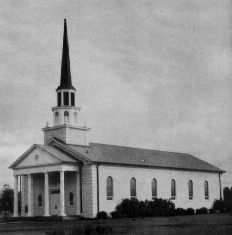
The Henna family was instrumental in founding the Texas Baptist Children’s Home (DiGesualdo and Thompson 359).
The US Census lists 1,438 people in Round Rock, ranked the fifth largest town in Williamson County behind Taylor, 9,071; Georgetown, 4,951; Bartlett, 1,727; and Granger, 1,637 (Census).
1951
Dial telephone service replaces operators in Round Rock.
1952
Television comes to Round Rock.
1956
The Missouri Pacific Railroad took over the International & Great Northern Railroad (Eldon 334).
1957
Heavy rains flooded Brushy Creek and caused it to overflow into parts of the flats in the downtown area.
1959
The Trinity Lutheran orphanage and old age home became the Trinity Lutheran Nursing Home (DiGesualdo and Thompson 522).
1960
Round Rock’s population is 1,878 (Census).
mid-1960s
The Ladies Home Demonstration Club establishes Round Rock’s first library and bookmobile, run entirely by volunteers. The library was not City-owned until 1978.
1968
Lorenzo Rubio becomes the first Hispanic on the Round Rock City Council.
1969
City of Round Rock adopts its first zoning ordinance.
1970
Round Rock’s population is 2,811 (Census).
1972
Round Rock High School begins classes at its current campus.
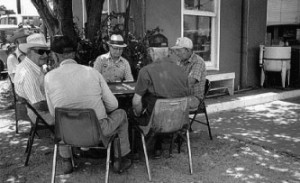
1973
The Domino Players began playing under the tree at the Mobile Station on the corner of Mays and Main. After the station closed early each afternoon in response to the gas shortage, L. P. Parker, Garland Walsh, “Doc” Parker, Moody Mayfield, C. J. Miller, Mr. Kelly and Mercer Archer began playing dominoes. And so the tradition began.
1976
In June, Women’s Club hosts a tour of five historic homes and the Palm Valley Lutheran Church.
1978
A prolonged drought hits the central Texas area causing Round Rock wells to go dry. For a short period of time, citizens had to go without water which forced the City Council to find alternative water supplies. The all-volunteer Round Rock Fire Department hires its first paid firefighter.
1980
Round Rock’s population is 12,740 (Census).
1981
A new 30 inch waterline connects Lake Georgetown to the new water plant providing Round Rock a more secure water supply. Additional contracts in succeeding years insure Round Rock of water supplies into the next millennium.
1983
Downtown National Register District established for the 100 and 200 blocks of East Main Street. Round Rock Hospital opens.
1984
A road construction worker on the FM 1431 project discovered the so-called “Leanderthal Lady.” These skeletal remains date human habitation in the Round Rock area back 8,000 years.
1984-1985
Round Rock experiences unprecedented growth during 1984 and 1985. During this two-year period, the city grew at an 18-20% annual rate adding approximately 9,000 citizens to the 18,000 population base.
1987
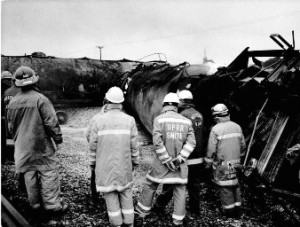 On December 12, 82 railroad cars were accidentally set rolling from a switching station in McNeil, reaching speeds in excess of 60 mph as they passed through the downtown area. Shortly thereafter, 15 of the runaway cars, filled with chemicals, derailed and several caught fire and burned for three days. This near-disaster received national media attention and forced the evacuation of more than 5,000 residents. State and federal agencies later told RRFD that the wreck had the potential to be worse than the 1984 Union Carbide disaster in Bhopal, India that killed over 2,500 people.
On December 12, 82 railroad cars were accidentally set rolling from a switching station in McNeil, reaching speeds in excess of 60 mph as they passed through the downtown area. Shortly thereafter, 15 of the runaway cars, filled with chemicals, derailed and several caught fire and burned for three days. This near-disaster received national media attention and forced the evacuation of more than 5,000 residents. State and federal agencies later told RRFD that the wreck had the potential to be worse than the 1984 Union Carbide disaster in Bhopal, India that killed over 2,500 people.
1990
Round Rock’s population is 30,923 (Census). Forest Creek Golf Course opens. At the local election in September, voters rejected a $7 million bond issue to build a baseball stadium for an AA minor league team. Two months later, more than 500 Round Rock citizens volunteered to plant 900 Live Oak, Chinese Pistachio and Crepe Myrtle saplings along IH-35. This was the first phase of the City Beautification Program to improve the appearance of the gateways into Round Rock.
1991
The Railyard farmers’ market opens downtown.
1992
A private interest group announces that Round Rock is again applying for a minor league baseball franchise. City of Round Rock is granted a National Parks Service grant to inventory historic buildings.
1994
Dell Computer announces the relocation of its world headquarters from Austin to Round Rock. The deal resulted in a significant jump in the tax base.
1995
Brushy Creek Municipal Utility District is released from Austin and given to Round Rock by the State Legislature. A 7-11 gas station at Sam Bass Road and Heritage Drive contaminates Brushy Creek MUD wells forcing BC MUD to close all wells. Round Rock provides water for two years in the interim.
1996
First Christmas Tour of Historic Homes sponsored by the City of Round Rock and the Historic Preservation Committee. Included in the tour were the 1885 Israelson-Telander House and 1894 Palm Valley Lutheran Church. Drought continues. Round Rock well and ground water supply Brushy Creek MUD and others with water during the crisis. City of Round Rock and LCRA sign an agreement to provide regional wastewater via the Brushy Creek Regional Wastewater Plant. General Obligation Bond and Charter Amendment Election on January 20. Bond issues included Public Safety, Library Expansion Project, Park Improvements and the Building of a Recreation Center, Parkland Acquisition, and various Public Works projects including street improvements, drainage and a new City Vehicle Maintenance Facility. All of these passed except for the Park Land Acquisition Bond in which only 46% voted in favor of the Proposition.
1997
Commuter Rail District established during 75th legislative session. The first Class 5 tornado to hit the U.S. this far south sweeps through Jarrel. 27 people were killed. A few minor tornadoes do minor damage to Round Rock. Round Rock High School baseball team wins the 5A championship. Go Dragons!! Round Rock voters approve a half-cent economic development sales tax. Revenue is restricted to transportation improvements that impact the local economy.
1998
Voters overwhelmingly approve the use of hotel-motel tax revenue to fund a new minor league baseball stadium and conference center. They also defeat a proposition do create single-member districts for City Council. Baseball Hall of Famer Nolan Ryan leads an ownership group to bring a Double-A baseball franchise to Round Rock The Old Settlers Association votes to restore and preserve the Old Palm Mansion.
1999
Construction begins on the La Frontera retail center.
2000
Round Rock’s population is 61,136 (Census). Clay Madsen Recreation Center opens to the public. The Dell Diamond opens, and the Round Rock Express’ inaugural season ends with a final-inning victory in the Texas League Championship game.
2001
Tellabs closes the doors on its Round Rock manufacturing facility. Voters approve four bond provisions totaling $89 million for the new municipal office complex and street improvements in the southwest downtown area. Terrorists attack the Pentagon and destroy the World Trade Center with hijacked airplanes on September 11.
2002
The City Council passes a ban on smoking on nearly all public places. Brushy Creek Water Control and Improvement District residents approve a small property tax to pay for repairs and maintenance to flood control dams. Joanne Land retires after serving more than three decades as Assistant City Manager and City Secretary
2003
Jim Nuse becomes City Manager when Bob Bennet retires after two and a half decades of service. Construction begins on a series of toll roads, including State Highway 45. Round Rock lays claim to being the “Sports Capital of Texas” in a new tourism and marketing campaign targeting youth and recreational sports. Game on!
2004
City Council approves the tree protection and preservation ordinance. HEB announces it will build its largest grocery store in Round Rock at 155,000 sf. The Seton Healthcare Network and Scott & White both announce plans to build new medical centers in northeast Round Rock.
2005
Classes begin at the Round Rock Higher Education Center, a shared venture between Texas State University and Austin Community College. East Chandler Boulevard is renamed University Boulevard. Round Rock ranks as the 8th Safest City in the US according to research firm Morgan Quitno.
2006
Round Rock Premium Outlets opens. The Alan R. Baca Center for Senior and Community Activities opens. The Central Texas Turnpike System opens a series of connected toll roads in Williamson and Travis Counties including SH 45 North, SH 130, and 183A.
2007
After years of negotiations with Union Pacific Railroad, A.W. Grimes Boulevard opens from Gattis School Road to US 79, providing a much-needed north-south arterial road. Scott & White opens its University Branch Medical Center in northeast Round Rock. Round Rock’s volunteer fire company is disbanded. Fire Station #2 moves to a new facility in downtown Round Rock. IKEA opens in north Round Rock, becoming the largest single retail store in Central Texas.
2008
Seton Hospital opens its regional medical center, Texas A&M breaks ground on a medical school branch campus, and Texas State University breaks ground on a nursing school campus, all near University Boulevard and FM 1460. Round Rock votes to be part of Austin Community College’s taxing district, making residents eligible for in-network tuition. A group of Round Rock police officers, telecommunications officers and public works personnel respond to communities hit by Hurricane Ike. Round Rock’s first dog park opens at 800 Deerfoot Dr.
2009
Street improvements begin in the southwest part of downtown, adding sidewalks, street parking spaces, and street trees. Palm Valley Lutheran Church (built 1894) is annexed into the city and designated as a local historic landmark. December – Texas A&M Health Science Center opens its Round Rock campus.
2010
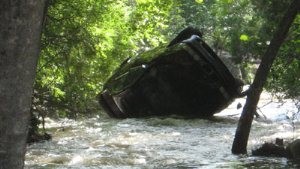 Round Rock’s population is 99,887 (Census). August – Austin Community College’s Round Rock campus opens for classes. Sept. 8 – Flash flooding related to Tropical Storm Hermine prompts police to evacuate residents near Lake Creek to a shelter at the Clay Madsen Recreation Center. Forty-four homes are flooded, mostly in the Round Rock West subdivision and on Lake Creek Circle. In November, voters approve an expansion of the purposes of the half-cent sales tax from transportation to all uses allowed by state law.
Round Rock’s population is 99,887 (Census). August – Austin Community College’s Round Rock campus opens for classes. Sept. 8 – Flash flooding related to Tropical Storm Hermine prompts police to evacuate residents near Lake Creek to a shelter at the Clay Madsen Recreation Center. Forty-four homes are flooded, mostly in the Round Rock West subdivision and on Lake Creek Circle. In November, voters approve an expansion of the purposes of the half-cent sales tax from transportation to all uses allowed by state law.
2011
City Manager Jim Nuse retires, capping a nearly three-decade career with the City of Round Rock. Central Texas breaks its all-time record for days over 100 degrees, and much of the state is in a drought officially categorized as “exceptional.”
2012
The Play for All Abilities Park at 151 N. A.W. Grimes Blvd. opens. The park is the result of a 5-year planning effort and many generous donations from businesses and service organizations.
2017
August 21: Round Rock Transit opens the city’s first fixed-route bus service begins operation.
(1) A league is 2.63 miles. Return to text
(2) Probably refers to Chandler Branch. Return to text
(3) The San Gabriel River. Return to text
(4) DiGesualdo and Thompson give the date as 1868, year the land was acquired by the Masons from Mary and Washington Anderson (458-459). Return to text
(5) Like much of the information surrounding Round Rock’s early schools, there is confusion as to the year Hardin graduated. DiGesualdo and Thompson give the date as 1872 on page 460. On page 121, they quote Hardin who said it was 1870. Scarbrough agrees with Hardin. Return to text
(6) Some say his death was accidental. Return to text
(7) Includes information that was not in the original 1991 text of the Historical Round Rock Collection; added by Planning & Development Services Dept. staff in 2015.
“Black Rodeo Cowboy Honored.” The Sunday Oklahoman. December 5, 1971.
Carter, Katheryn Turner. Stagecoach Inns of Texas. Texian Press, Waco, Texas: 1972.
Catalogue of Trinity Lutheran College, Round Rock, Texas and Announcements for 1912-1913.
Dennis, Denise. Black History for Beginners. Writers and Readers Publishing, Inc. New York: 1984.
Eldon, Stephen B. (ed.) The Handbook of Texas: A Supplement. The Texas Historical Association, Austin, Texas: 1976.
Falconer, Thomas. Letters and Notes on the Texan Santa Fe Expedition 1841-1842. Dauber and Pine Bookshops, Inc., New York: 1930.
“Founding Georgetown Railroad in 1878 was Momentous Event.” Williamson County Sun. August 1, 1968.
Gard, Wayne. The Chisholm Trail. University of Oklahoma Press, Norman, Oklahoma: 1954.
Jones, William K. “Notes on the History and Material Culture of the Tonkawa Indians.” Smithsonian Contributions to Anthropology. Vol. 2, No. 5. 1969.
“Minutes of Round Rock Masonic Lodge No. 227.” Carbon copy of transcription attached to a July 27, 1936 letter to Lota Spell signed “County Judge.” In Round Rock Public Library unclassified files.
National Register of Historic Places, “Inventory and Nomination Form for the Captain Merrell House.” 1970.
Pool, William D. A Historical Atlas of Texas. Encino Press, Austin, Texas: 1975.
Round Rock City Council Minutes. Various dates.
Scarbrough, Clara Stearns. Land of Good Water, Takachue Pouetsu: A Williamson County, Texas History. Williamson County Sun Publishers, Georgetown, Texas: 1973.
Scarbrough, Linda. Road, River and Ol’ Boy Politics: A Texas County’s Path from Farm to Supersuburb. Texas State historical Association, Austin, Texas: 2005.
“Some Early Williamson County History” in Frontier Times. No date. Photocopy in Round Rock Public Library. Article reprinted from Williamson County Sun (Georgetown) April 7, 1936. Original W. K. Makemson. Historical Sketch of First Settlement and Organization of Williamson County. Sun Print, Georgetown, Texas. 1904.
Taylor, T. U. The Chisholm Trail and Other Routes. Printed for Frontier Times by the Maylor Co., San Antonio, Texas: 1936.
Thompson, Karen R. and Jane H. DiGesualdo. Historical Round Rock, Texas. Eakin Press, Austin, Texas. 1985.
Wallace, Jesse. Old Texas Trails. Eakin Press, Burnet, Texas. 1979.
Webb, Walter Prescott. The Texas Rangers. University of Texas Press, Austin, Texas: 1965.

